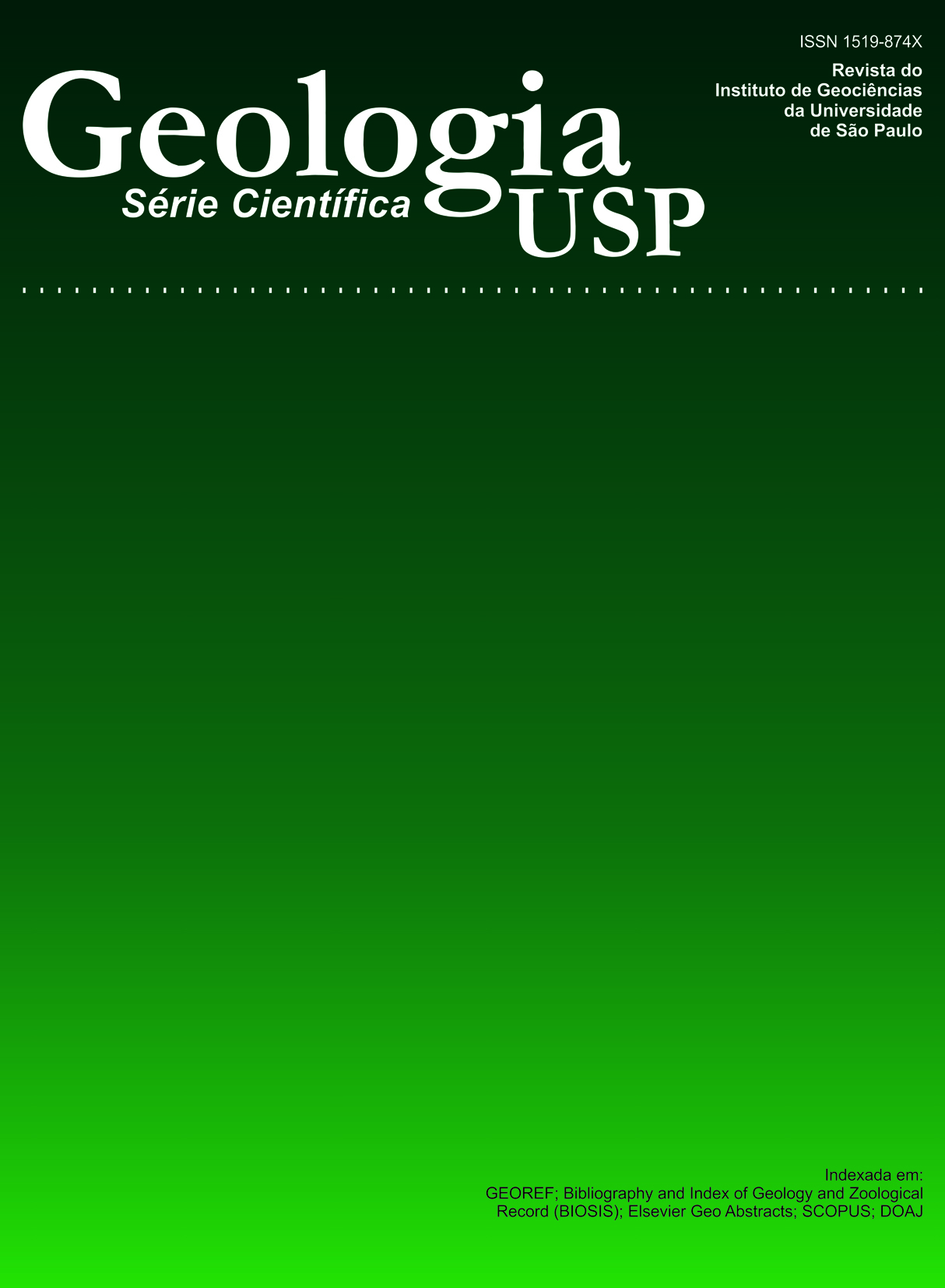Structural and metamorphic analysis of the Sucuru-Paraíba region: implications for evolution of the Alto Moxotó Terrane, Borborema Province
DOI:
https://doi.org/10.5327/Z1519-874X2012000300001Keywords:
Paleoproterozoic, Collisional orogen, Borborema Province, Northeastern BrazilAbstract
Inserted on the Alto Moxotó Terrane of the Borborema Province, the Sucuru region (Paraíba state, Brazil) includes two dominantly pre-Ediacaran tectono-stratigraphic domains, bounded by an expressive thrust shear zone (Carmo SZ). The first domain has a metaplutonic nature, being formed by granodioritic to migmatitic orthogneisses (Floresta Complex) cut by several intrusive suites. These suites comprise a unit of mafic-ultramafic nature (Malhada Vermelha), a second one mainly of granitic-granodioritic composition (Pedra d'Água) and a last suite whose composition ranges from syenitic to syenogranitic (Serra da Barra). On the second domain predominate migmatitic paragneisses from of the Sertânia Complex. All these units were cut by Cambrian-Ediacaran felsic dykes and A-type granites. Three tectonic events were recognized. The first Dn episode represents a thrusting with tectonic transport to NW-NNW, being important the Sucuru and Carmo shear zones. The Dn+1 episode is a transcurrent event of Ediacaran age, being important in regional context the Coxixola and Congo shear zones. The final progressive late Ediacaran-Cambrian Dn+2 episode, culminated with the emplacement of the Sucuru dyke swarm and the Prata and Serra da Engabelada A-type granites. Petrographic evidences show that the Dn episode reached its metamoprhic peak on the granulitic or eclogitic facies, whose paragenesis was after re-equilibrated to the amphibolite during the Dn+1 event. The Dn+1 episode developed mylonitic corridors on the amphibolite facies with associated migmatization, while the Dn+2, event reached a greenschist facies restrict to influence of the late and post-tectonic intrusives. The occurrence of garnet amphibolites with symplectite texture along the metamorphic path Mn-Mn+1 suggests that the thrust event represented a high pressure metamorphic episode, indicating a probable Paleoproterozoic suture.Downloads
Download data is not yet available.
Downloads
Published
2012-12-01
Issue
Section
Articles
License
Authors who publish in this journal shall comply with the following terms:
- Authors keep their copyright and grant to Geologia USP: Série Científica the right of first publication, with the paper under the Creative Commons BY-NC-SA license (summary of the license: https://creativecommons.org/licenses/by-nc-sa/4.0 | full text of the license: https://creativecommons.org/licenses/by-nc-sa/4.0/legalcode) that allows the non-commercial sharing of the paper and granting the proper copyrights of the first publication in this journal.
- Authors are authorized to take additional contracts separately, for non-exclusive distribution of the version of the paper published in this journal (publish in institutional repository or as a book chapter), granting the proper copyrights of first publication in this journal.
- Authors are allowed and encouraged to publish and distribute their paper online (in institutional repositories or their personal page) at any point before or during the editorial process, since this can generate productive changes as well as increase the impact and citation of the published paper (See The effect of Open Access and downloads on citation impact).
How to Cite
Santos, L. C. M. de L., Santos, E. J. dos, Dantas, E. L., & Lima, H. M. (2012). Structural and metamorphic analysis of the Sucuru-Paraíba region: implications for evolution of the Alto Moxotó Terrane, Borborema Province . Geologia USP. Série Científica, 12(3), 5-20. https://doi.org/10.5327/Z1519-874X2012000300001





